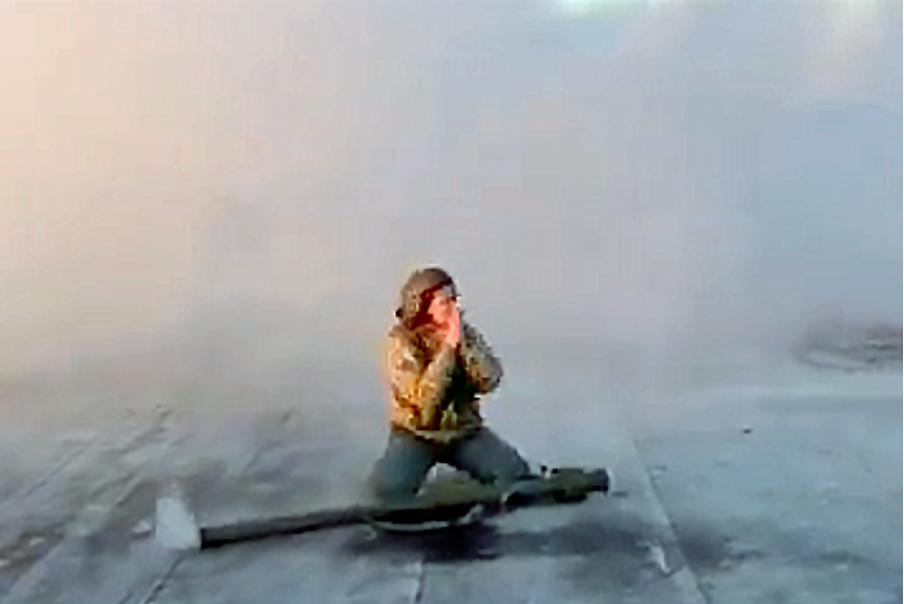“When you are fighting for your freedom, a lot of people rely on you, and all you can do is fight hard for them,” says the former Head of the Central Tibetan Administration (2012-2021), also known as the “Tibetan government in exile.”
Lobsang Sangay casually mentions that he has just arrived, after a 36-hour whirlwind trip covering Zurich, Brussels, and Prague, before his trip to Kyiv. What keeps him moving?
JOIN US ON TELEGRAM
Follow our coverage of the war on the @Kyivpost_official.
Tenacity seems to be a key part of Sangay’s personality, relating that before the US passed the Tibetan Policy and Support Act of 2020, which recognized him as the official leader of the exile government, he had been denied entry into the White House and State Department, over a decade, more than 40 times.
Sangay says that Tibet’s cause took a turn to the right with the passage of the Tibetan Policy and Support Act of 2020 that has allowed him to be more effective in fighting for his people’s rights.
He explains how China is systematically seeking to destroy traditional Tibetan culture, replacing it with Han Chinese culture. Nonetheless, Sangay maintains his cool: “Tibet was invaded, 98% of monasteries and 99% of monks and nuns were disrobed, but today monasteries are being rebuilt,” he says.
Tibetans resist forced assimilation. “Even now, speaking the Tibetan language, or wearing Tibetan dress, is a form of resistance, as is going to monasteries,” which is why Tibetans “constantly” do that, he reports.

‘Smoke Screens Protect Troops’ as Ukrainian Tanks Strike Russian Forces and Evade FPV Drones in Kurakhove
Now, with 200,000 of an estimated 6 million Tibetans forced into exile, Sangay says that they are all “ambassadors” of their nation, seeking to teach others about their struggle. Every Wednesday evening – whether in Lhasa, the “capital city of Tibet, which is under China, or in Chengdu, where large numbers of Tibetans live, or in India, where a large number of exiles are, or Toronto or New York, everywhere,” Tibetans perform their traditional dances to their traditional music.
While acknowledging that Ukraine and Tibet face different challenges, since Ukraine is already an internationally recognized country, there is nevertheless an aspect of shared experiences between Tibetans and Ukrainians: imperialists and colonizing forces, such as those of Russia and China, are known to loot local lands for natural resources.
In the case of Ukraine, Russia’s occupation of the Donbas resulted in a loss of 80% of Ukraine’s coal – a key element of steel production – which resulted in Ukraine dropping from 14th place in 2021, to 24th place in 2023, as the largest producer of steel. A significant blow considering that a third of all Ukrainian exports used to be steel.
Today, Russia continues to prioritize scooping-up Ukraine’s natural resources, a strategy Moscow hopes will allow Russia to corner the European steel market, as seen in Pokrovsk, Ukraine, the site of current heavy fighting. Should the city fall, Ukraine’s coal production will fall from about 7.5 million tons of coal per year to 2-3 million tons of coal per year, such a small amount of domestic coal production that Ukraine would have to import coal, thereby driving Ukrainian steel’s cost well above current market prices, leaving Russia to benefit.
As with Tibet, many Western governments are willing to ignore the aggressor country’s misdeeds. In the case of Ukraine, European countries have softened sanctions on Russian steel and have refused to sanction metal-magnates who sell not only to Europe, but also to the Russian Army.
The brutal nature of war to steal resources, the calculating game of Moscow, has its parallels in how the Chinese are dealing with Tibet.
Sangay notes that China’s interest in Tibet has underlying economic reasons, as well: 80% of China’s cotton comes from Xinjiang; 75% of the Lithium China gets is from Tibet; 50% of the copper, gold, and uranium also comes from Tibet, and 90% of rare earth of China comes from Inner Mongolia.
In both nations, Ukraine and Tibet, millions of people’s lives have been turned upside-down and cultures destroyed as imperialists seek to rob their victims of resources. Nonetheless, Sangay remains calm, reminding that the Tibetan people have over 2,500 years of history, throughout which there had also been calamities, but have survived.
Before leaving, Sangay expressed that there was something which he wished to communicate to the people of Ukraine, saying “Your success would be our success,” as “Ukraine is standing up, it is a battle for the right side, the good side, and it’s time the good side wins and the bad side loses.”
You can also highlight the text and press Ctrl + Enter






